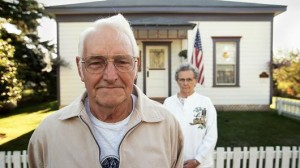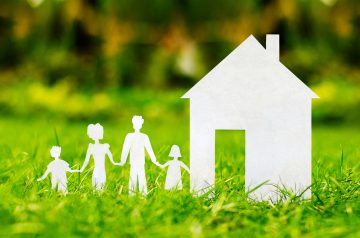Is Your Home Ready for Aging in Place?
 If you have an aging parent, friend or close relative in your life, read this helpful information provided by Mark Stappenbeck, owner and manager of Assisting Hands of Bergen County.
If you have an aging parent, friend or close relative in your life, read this helpful information provided by Mark Stappenbeck, owner and manager of Assisting Hands of Bergen County.
It’s time for spring cleaning! Most of us feel inclined to spruce up our homes and yards as the weather turns pleasant this time of year. But if you are a senior or family caregiver, or even if you have senior guests from time to time, your spring cleaning should especially focus on removing hazards and making improvements to keep these older adults safe and comfortable. Performing repairs and adding features that make the home more accessible create a better environment for people of every age and ability.
According to the AARP Public Policy Institute, 90 percent of Americans age 50 and older intend to stay in their own homes. There are many good things to be said for “aging in place”! For many Americans, staying in our own homes means staying where our roots are. We cherish our familiar surroundings. We know the services and businesses in our neighborhood. We rely on an informal support system of family, friends and neighbors.
But many of us may find that our homes haven’t kept up with our needs as we deal with the common physical changes of aging. For example, many hidden hazards can lead to dangerous falls for people with mobility and sensory challenges. Falls are a serious problem for seniors! According to the Centers for Disease Control and Prevention (CDC), thousands of older adults die from fall injuries every year and millions are treated for nonfatal injuries. Falls are the top reason seniors go to the emergency room. And over half of these falls take place right in the person’s own home.
Fires are another concern. Older adults are at greater risk of being injured in a home fire. They may be physically less able to take quick action after a fire. Cognitive impairment or the side-effects of medication may affect their ability to make decisions. They may forget to turn off the stove, or fall asleep while smoking.
Seniors are also at greater risk of criminal activity in the home. Unfortunately, many burglars and con artists target frail, vulnerable elders.
Whether you live in a house, an apartment, or a condo, this might be a good time to take stock of your home. What changes can make your home as safe and secure as possible? And if you are one of the growing number of family caregivers whose older loved one now lives with you, have you considered ways your home can adapt to your loved one’s needs? Senior-friendly modifications can provide greater peace of mind for everyone in the family. Some modifications, such as adding a roll-in shower or lowering kitchen cabinets, are fairly major remodeling projects. Other improvements are easier and can be done at a smaller cost. Here are three steps to take as you evaluate your home:
Senior-friendly modifications can provide greater peace of mind for everyone in the family. Some modifications, such as adding a roll-in shower or lowering kitchen cabinets, are fairly major remodeling projects. Other improvements are easier and can be done at a smaller cost. Here are three steps to take as you evaluate your home:
Remove Hazards and Add Safety Accessories.
To help prevent accidents, perform a room-by-room safety inspection of the home. Make repairs and remove clutter throughout the home and outside. Inspect smoke alarms. Make safety improvements and additions, such as non-slip, non-glare flooring, low-pile carpeting, grab bars in the bathroom and night lights (the nextOn the Homefront post, “Give Your Home a Senior Safety Checkup,” will include a free checklist that you can download and use as you perform your inspection.)
Add Adapted Features for Accessibility and Independence.
Enhance accessibility and improve independence with adaptive features such as easy-grip knobs and pulls in the kitchen, wheelchair or walker access, and touch light switches. If necessary, re-arrange the house for one-story living.
Make Home Repairs for Comfort and Convenience.
Make sure the roof, gutters, stairs and railings are in good repair. Inspect and upgrade plumbing, electrical, heat and air conditioning systems if necessary. Install energy efficient features.
You can fix some things by yourself or with the help of handy friends, but doing it yourself is not always the best way to go. Poorly planned and built features can prove useless, or even dangerous. For example, a ramp that is too steep and lacks safety features is worse than no ramp at all. Grab bars that are not solidly anchored can cause rather than prevent falls. If you are hiring a handyman or contractor to do some of the work for you, be certain the person or company you select is reliable and trustworthy (“Give Your Home a Senior Safety Checkup,” coming next in this On the Homefront series, also includes a “Home Repairs and Modifications Checklist” with considerations for hiring a contractor).
Important note: Older adults are often targeted by unscrupulous contractors and service providers. Be wary of door-to-door repair sales. A common scam is for a salesperson to come to your door claiming that his company is working on a job in your neighborhood and offering to do work on your house for a low rate. He might claim to have spotted dangerous conditions that should be taken care of “right away.” But when the work is completed (if it ever is completed), the services and materials usually turn out to be shoddy and not to code. Never agree to any services until you have checked out the company.
The 5 Most Charming Towns in NJ

3 Simple Tips to Preparing Your Home to Sell.






















